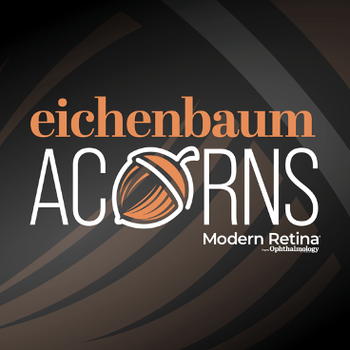
Considerations for Incorporating GA Therapies Into Clinical Practice
Panelists discuss how they manage patients requiring both wet age-related macular degeneration (AMD) and geographic atrophy (GA) treatments by administering injections on separate days rather than on the same day to avoid workflow disruption, address the increased intraocular pressure from the larger 100-µL complement inhibitor dose by allowing patients time to acclimate in the chair with only a small percentage requiring pressure-relieving taps, and acknowledge that although this dual-therapy population represents a minority of their patients undergoing complement modulation, these experienced injection recipients are typically very accepting of additional treatments.
Episodes in this series

Managing patients with concurrent wet AMD and GA presents unique clinical challenges, as these patients were excluded from clinical trials but represent a real-world population requiring dual therapy. Although this represents a small subset of patients undergoing complement modulation, these individuals often have years of experience with anti-VEGF injections and readily accept additional treatment for their advancing atrophic disease. The decision to treat these patients lacks prospective evidence, making it a clinical judgment call based on individual patient factors and physician comfort level. Patients with established wet AMD treatment typically demonstrate high acceptance of adding complement inhibitor therapy to their regimen.
Logistical considerations significantly influence treatment delivery for patients requiring dual therapy. Although clinical trials demonstrated feasibility of same-day administration for both wet AMD and GA treatments, clinical practice often favors separate-day injections for operational efficiency. Same-day dual injections can disrupt clinic flow and require anterior chamber tapping if using the full 100-µL dose, making separate visits more comfortable for both patients and staff. The scheduling complexity of managing different treatment intervals for wet AMD (often extended) vs GA treatment (typically fixed monthly intervals) presents administrative challenges, particularly when treating different eyes with different therapies.
The larger injection volume of complement inhibitors creates pressure-related considerations requiring clinical management. Approximately half of patients experience visual changes immediately post injection, including whiteout or blackout effects, necessitating extended observation periods in the clinic. Most patients can accommodate these temporary visual changes through extended chair time without intervention, though 3% to 4% may require anterior chamber tapping for comfort. Alternative management strategies include gentle eye massage before or after injection to create space for the larger volume. Patients with advanced glaucoma may have different pressure responses, but most patients can be managed conservatively with time and observation rather than immediate pressure-reducing interventions.
Newsletter
Keep your retina practice on the forefront—subscribe for expert analysis and emerging trends in retinal disease management.












































